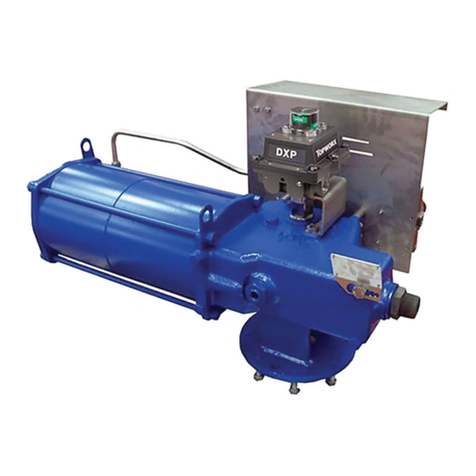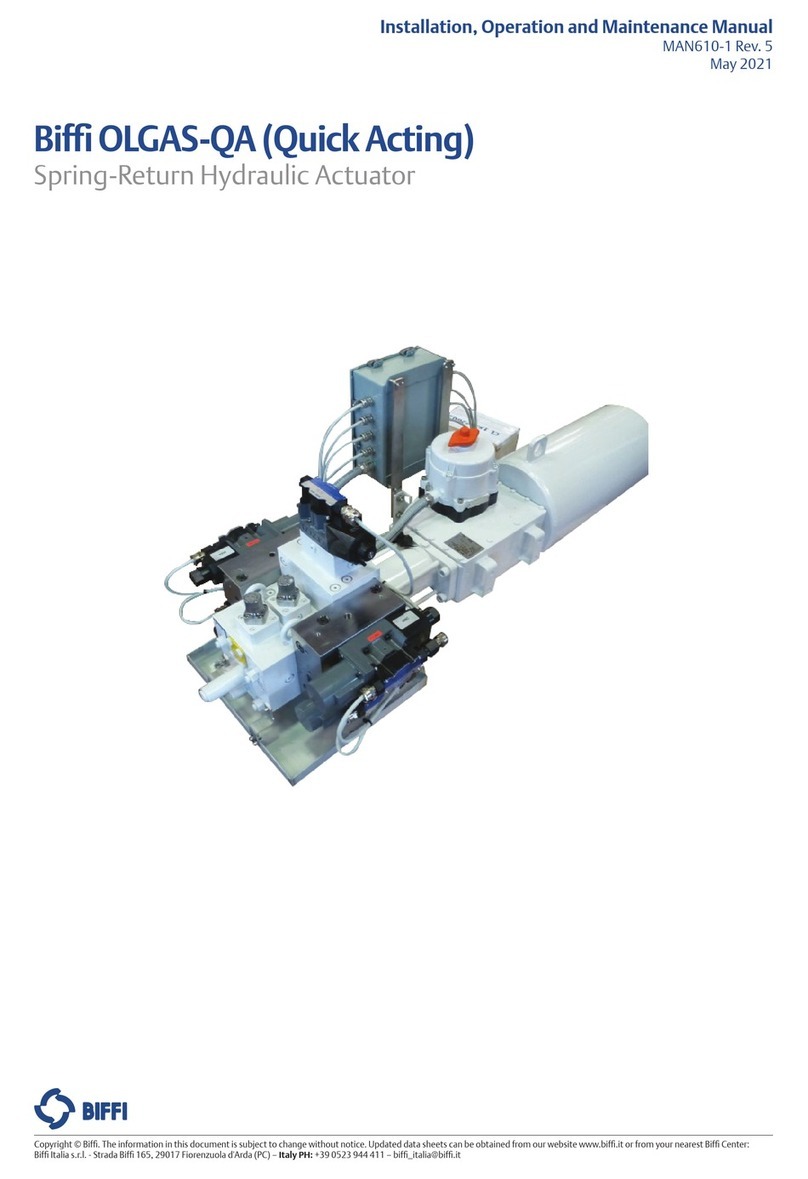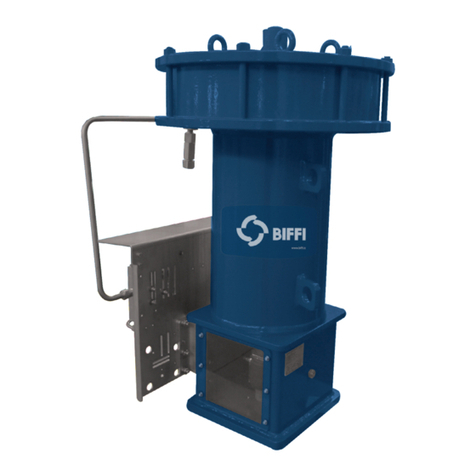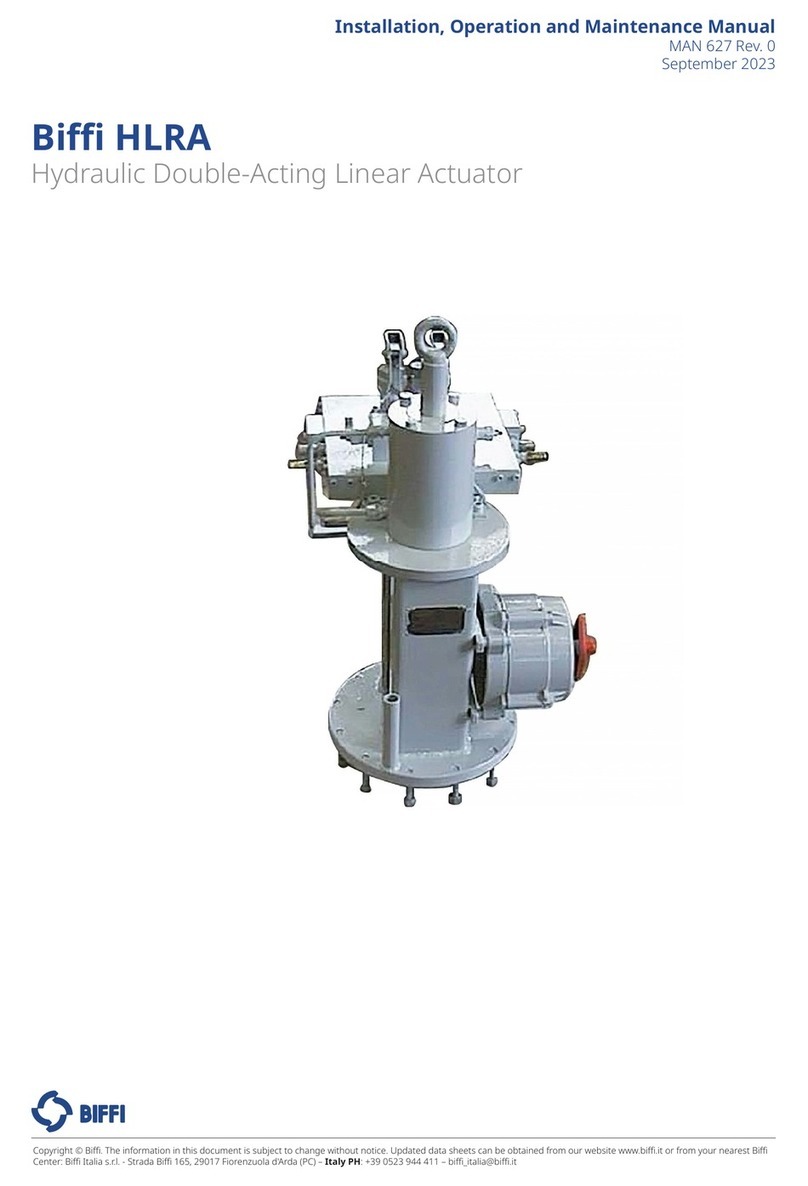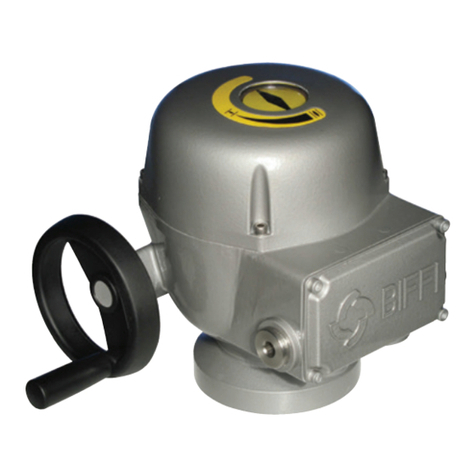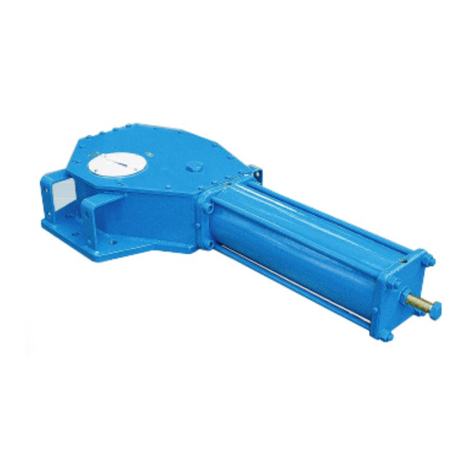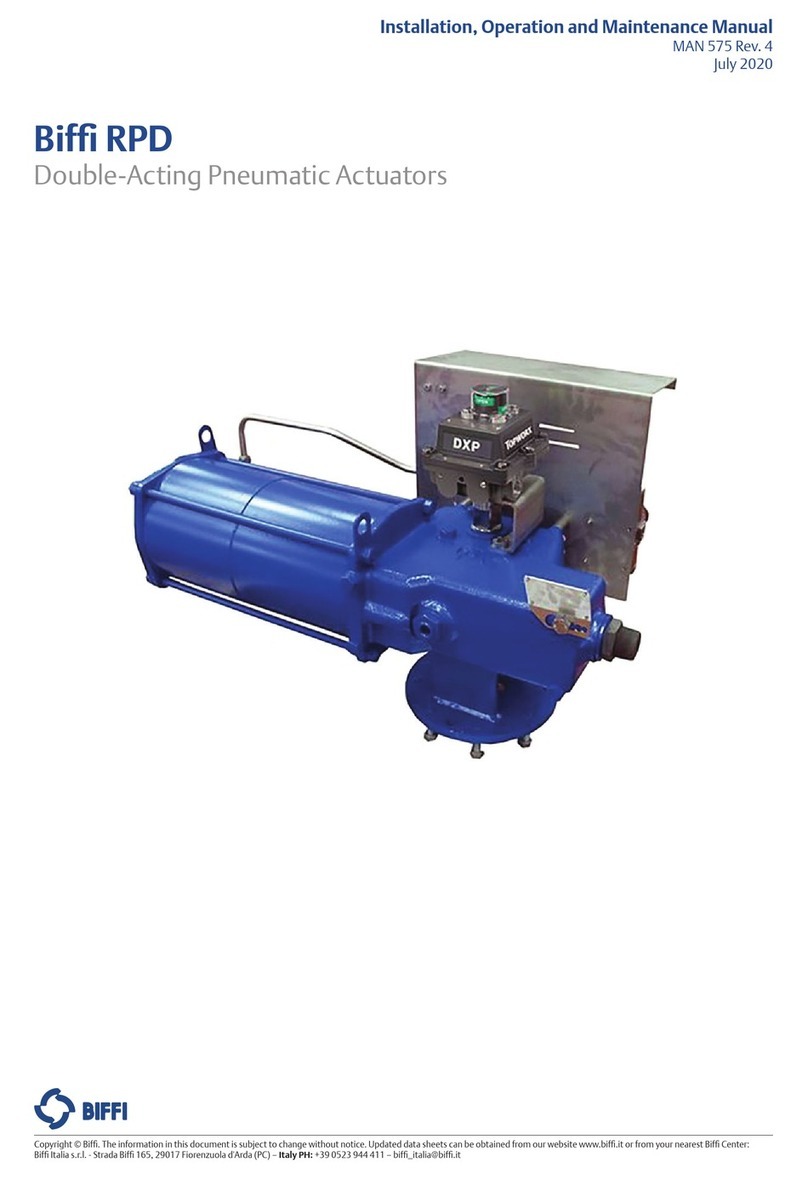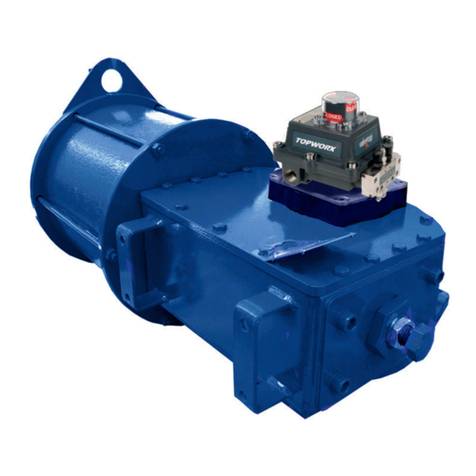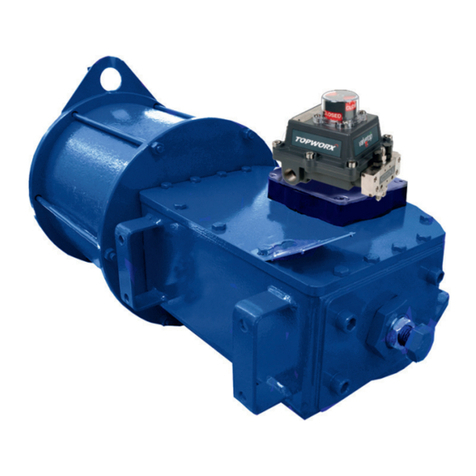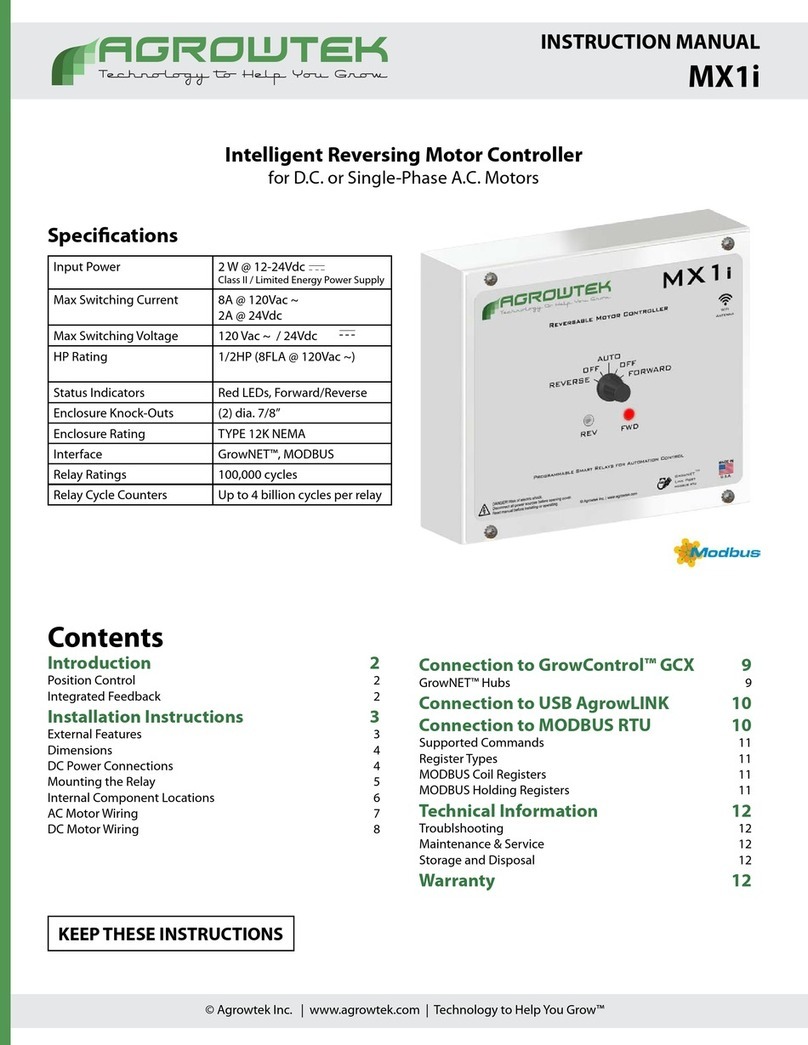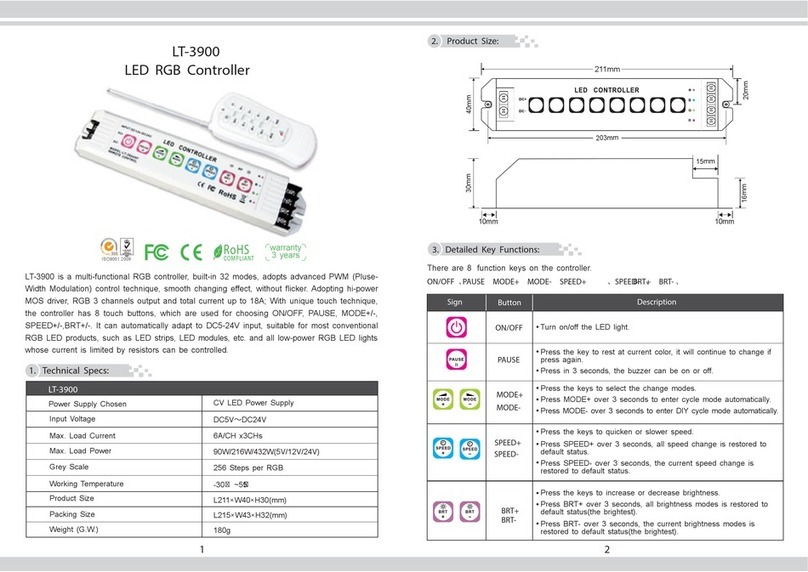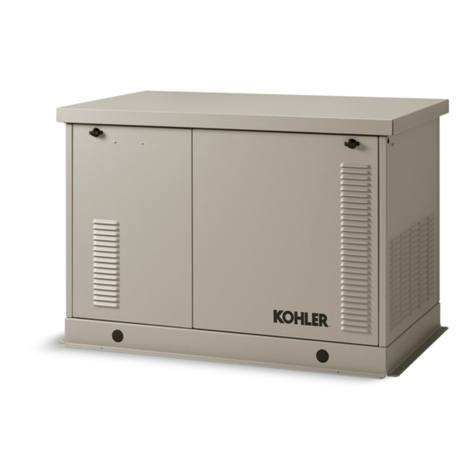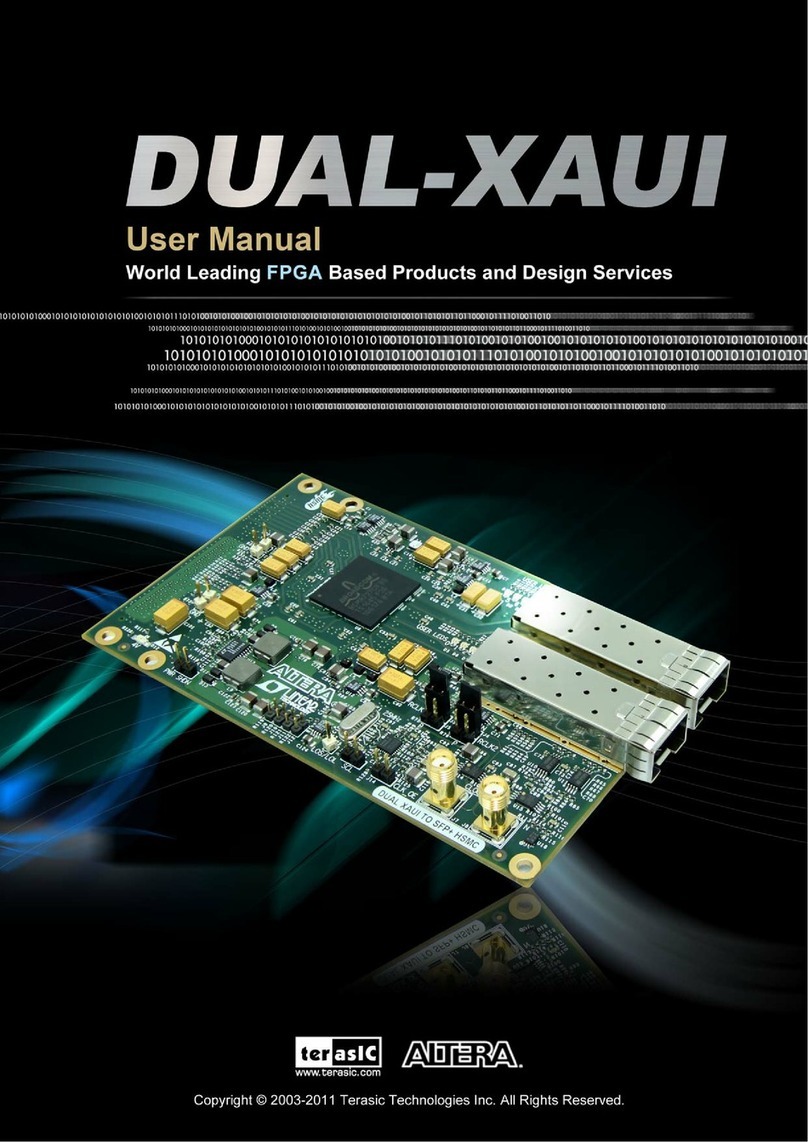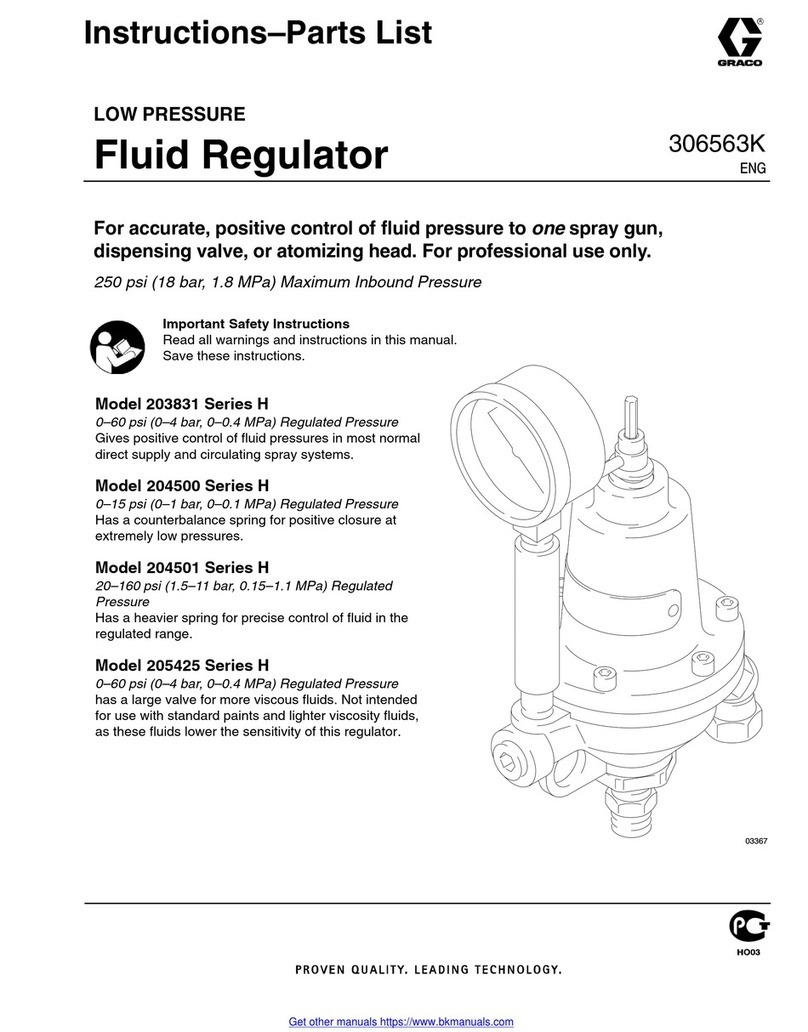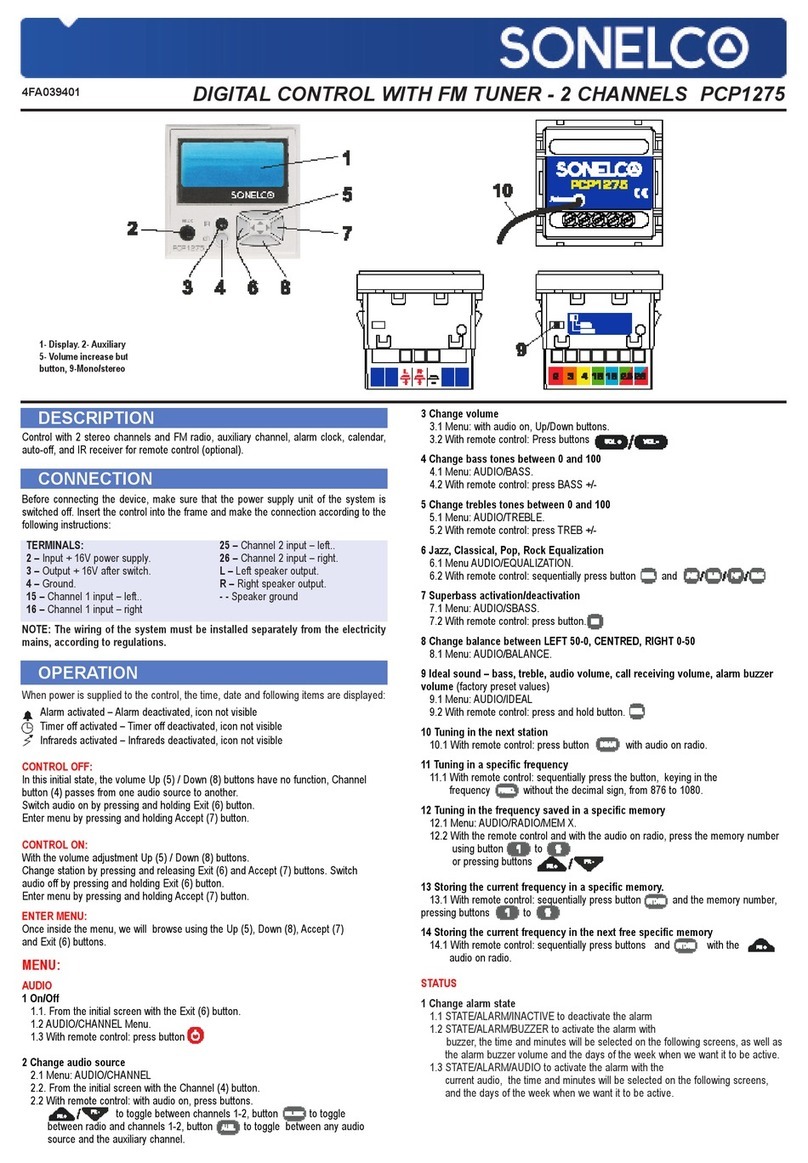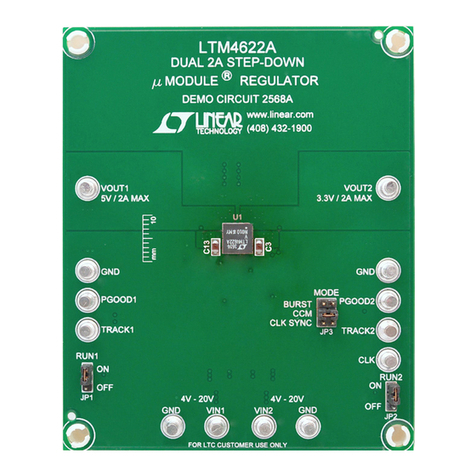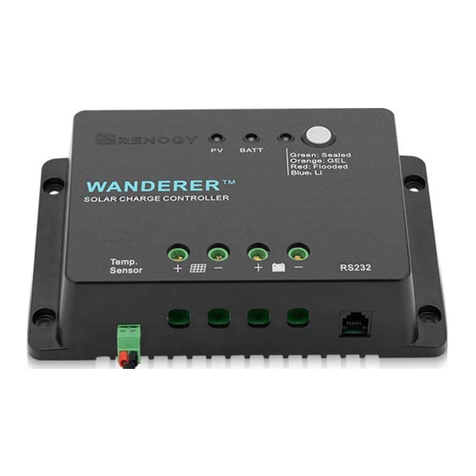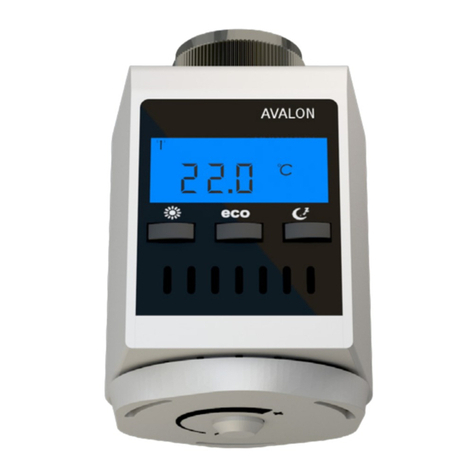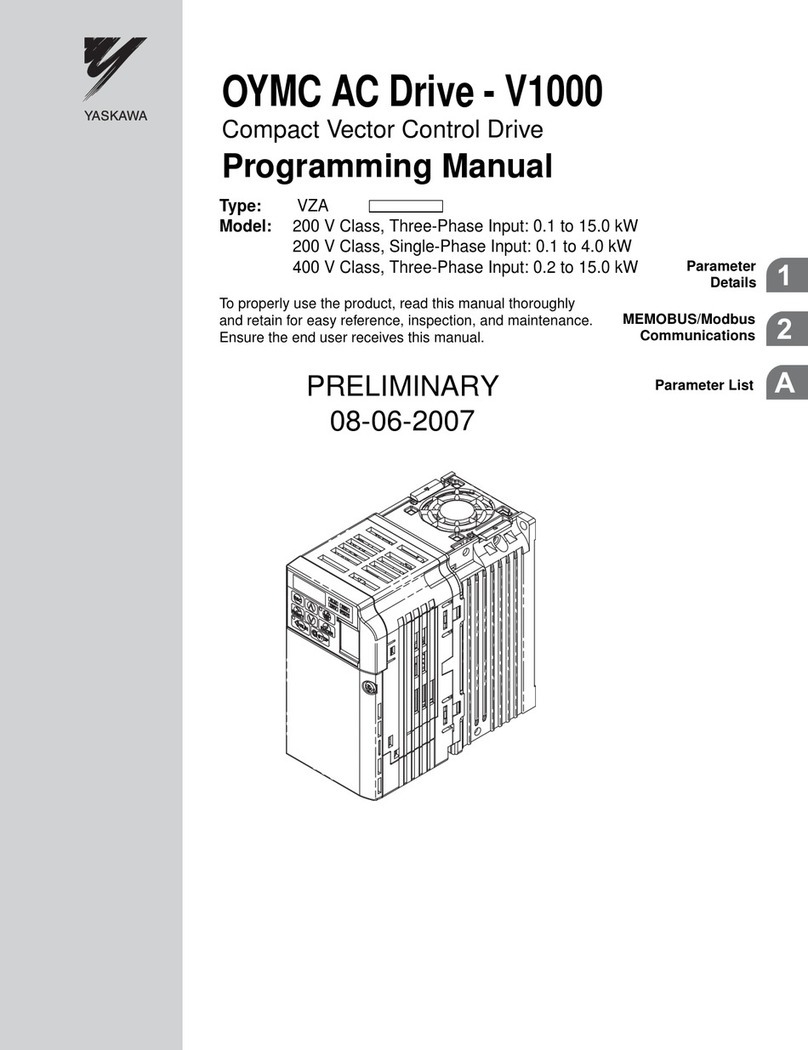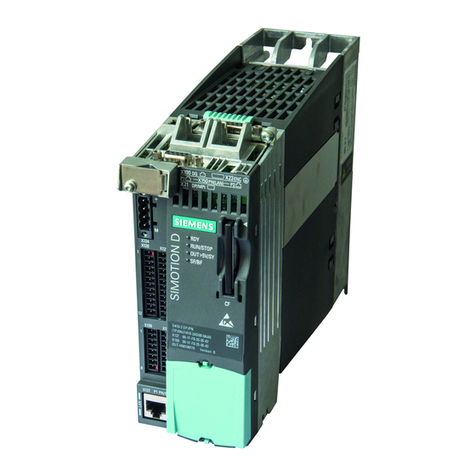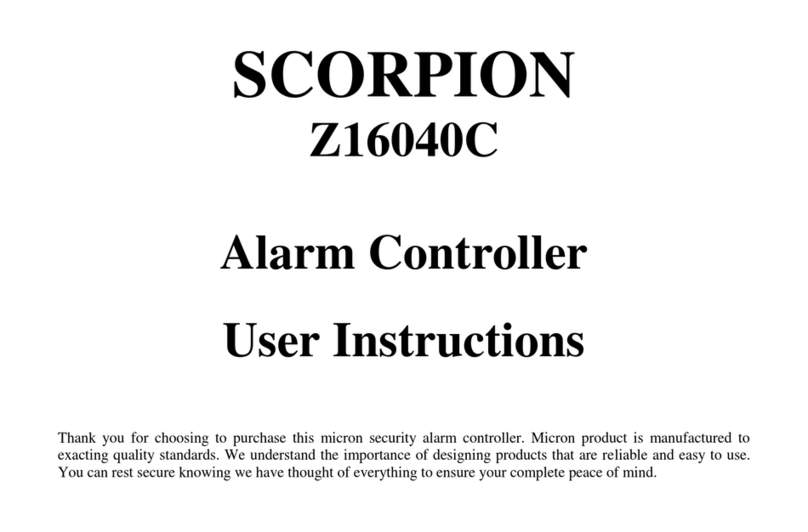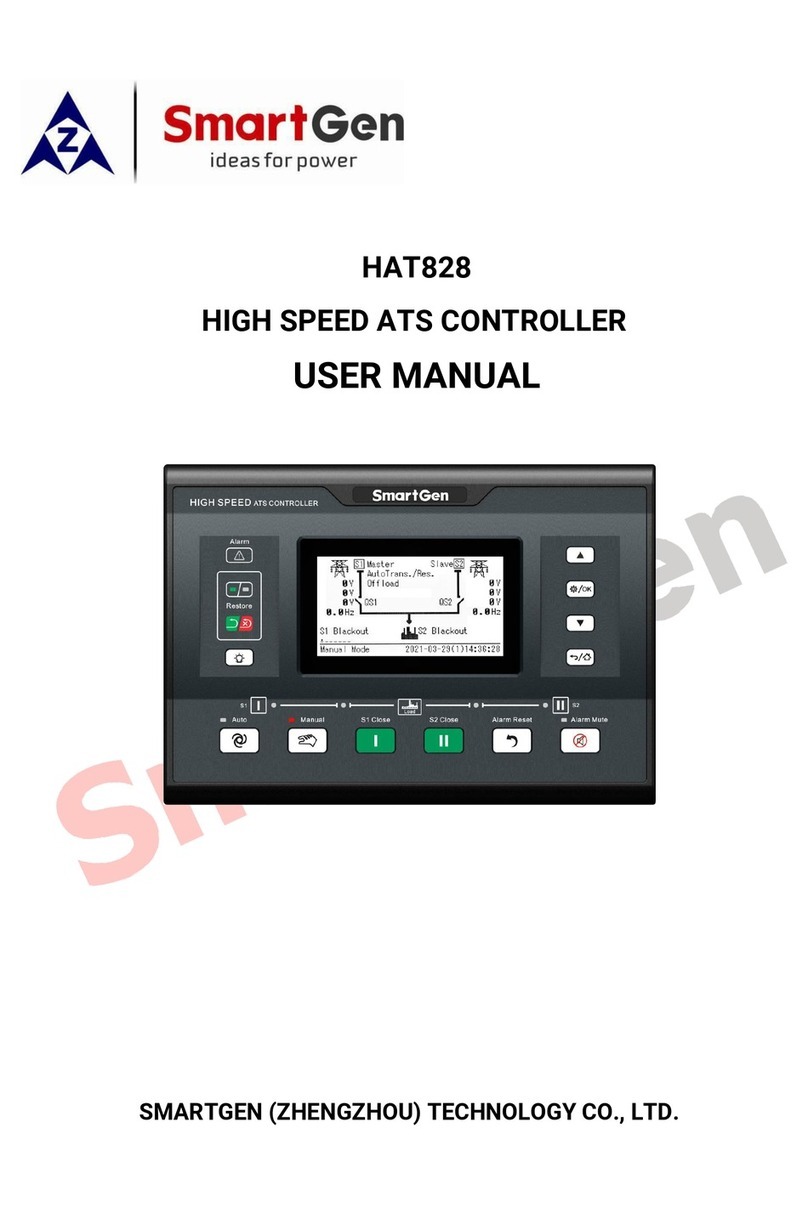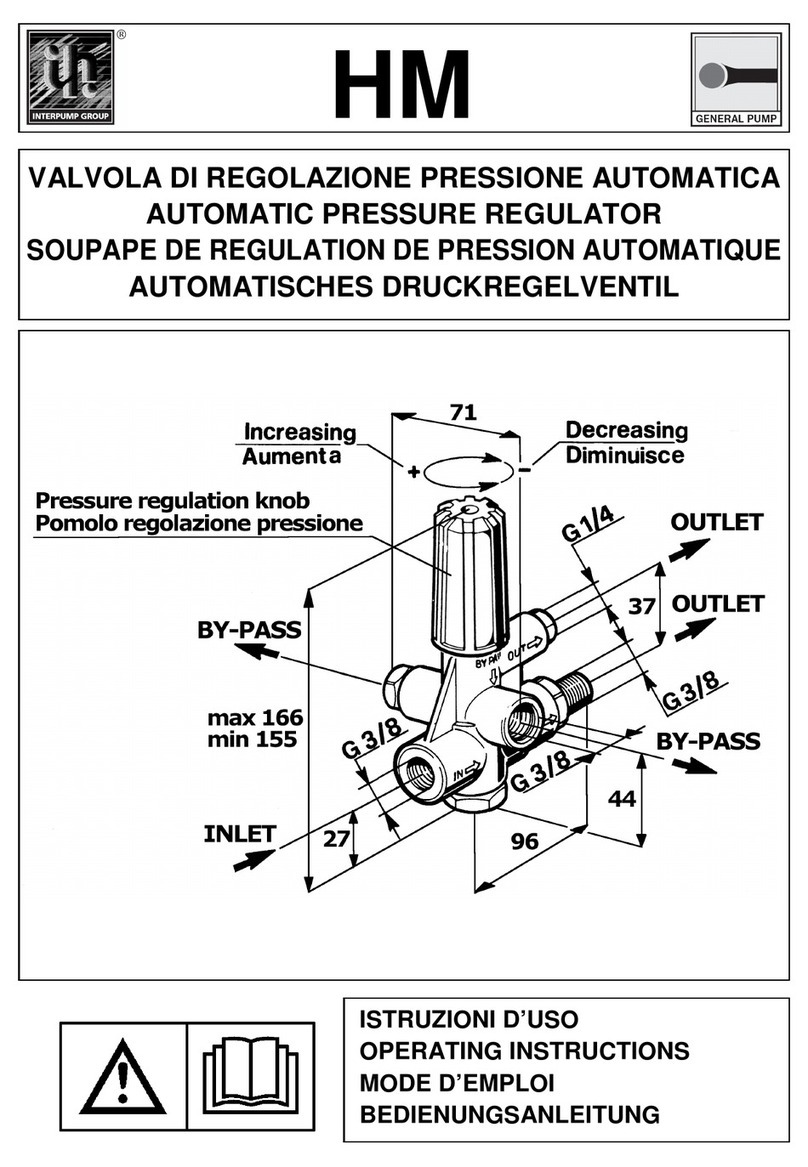BIFFI EFS2000v4 Parts list manual

BIFFI FAIL SAFE ELECTRIC ACTUATORS, MODEL EFS2000V4
InstructIon and operatIng Manual
INDEX
1. General safety instructions........................... 1
2. Machine description...................................... 3
3. Storage and pre-installation ........................ 4
4. Assembling the actuator onto the valve ...... 5
5. Adjustment of angular stroke ...................... 6
6. Installation..................................................... 7
7. EFS operation ................................................ 9
8. Actuator operation ...................................... 13
9. Optional modules ........................................ 16
10. Local controls.............................................. 20
11. Set-up menu................................................ 26
12. View menu ................................................... 27
13. Set-up routines............................................ 31
14. View routines ............................................... 47
15. Local indicator setting ................................ 57
16. Manual operation and fail-safe
speed setting ............................................... 58
17. Maintenance and trouble-shooting............ 61
18. Exploded view and parts list....................... 67
19. Lubrication................................................... 70
20. Operational tests and inspections.............. 70
21. Disassembling and demolition................... 70
1 GENERAL SAFETY INSTRUCTIONS
1.1 Manufacturer
The manufacturer with respect to the
Machinery Directive 2006/42/EC is Biffi Italia,
asspecified on the machinery label.
1.2 Device intended use
The devices to which this instruction and
operating manual applies are the EFS2000v4
Fail Safe Electric Actuators, which are designed
to operate any kind of quarter-turn industrial
valves for use in Emergency Shut Down (ESD)
applications in heavy industrial, chemical,
petrochemical, food, water and power
generating plants.
1.3 Terms and conditions
The manufacturer guarantees each single
product to be free from defects and to
conform with current goods specifications and
regulations as applicable. The warranty period
is 12 months from the date of installation by
the first user or 18 months from the date of
shipment to the first user, whichever occurs
first. No warranty is given for products, which
have been subject to damages or corrosion due
to the improper storage, improper installation,
VCIOM-02511-EN 17/12
Reference code: MAN_681
Biffi Italia will not be liable for any possible
damage or physical injury resulting from use
in other than the designated application or
by lack of care during installation, operation,
adjustment and maintenance of the machinery.
Such risks lie entirely with the user.
Depending on the specific working conditions,
additional precautions may be required.
The EFS2000v4 is produced by Biffi Italia and
identified on the proper label by the product
designation: EFS xxx/yyyy-zz
WARNING!
It is assumed that the installation, configuration,
commissioning, maintenance and repair works
are carried out by qualified personnel and
checked by responsible specialists.
IMPORTANT
This manual gives basic information for
EFS2000v4 configuration; more detailed
information for configuration and control of the
electric actuator part ICON2000 are included
on the VCIOM-01232 which form part of the
mandatory instructions documentation.
The EFS2000v4 is designed in accordance
with the applicable international rules and
specifications but in any case the following
regulation must be observed:
• The general installation and safety
regulations.
• The plant specific regulations and
requirements.
• The proper use of personal protective devices
(glasses, clothing, gloves).
• The proper use of tools, lifting and transport
equipment.
misuse, or which have been modified or
repaired by unauthorized personnel.
Repair work due to improper use will be
charged at standard rates.
1.4 Manufacturer’s liability
The manufacturer declines all liability in the
event of:
• Use of the device in contravention of local
safety at work legislation.
• Incorrect installation, disregard or incorrect
application of the instructions provided on the
product nameplate and in this instruction and
operating manual.
• Modification of the product without the
manufacturer’s authorization.
• Work done on the product by unqualified or
unsuitable personnel.
www.biffi.it Copyright © Biffi. All rights reserved.

2
BIFFI FAIL SAFE ELECTRIC ACTUATORS, MODEL EFS2000V4
InstructIon and operatIng Manual
1.6 Installation in hazardous area
WARNING!
In case the EFS2000v4 is to be installed in a
hazardous area, as defined by the applicable
rules, it is mandatory to check if the nameplates
of the EFS2000v4 and associated ICON2000
specify that the assembly is suitable to be
installed in hazardous area with the indication of
appropriate degree of protection.
Maintenance and repair works must be carried
out by qualified personnel and checked by
responsible specialists.
The EFS2000v4 version suitable for installation
in hazardous area, with the associated electric
actuator type ICON2000 and accessories,
is designed according to all the applicable
Standards EN/IEC60079-0, EN/IEC60079-1,
EN/IEC60079-7, EN/IEC60079-11,
EN/IEC60079-31, EN 13463-1 and EN 13463-5.
1.7 Marking for application in hazardous area
1.7.1 Label for ICON2000/ICON2000EC
Marking description:
0080 = Notified body for ATEX
II = Group II (surface)
2 = Category 2 apparatus
G = Explosive atmosphere by gas
D = Explosive atmosphere by dust
IP 66/68 = Degree of protection
Type of hazard Classification of zones Categories acc. to 2014/34/EU directive
Gas, mists or vapors Zone 0 1G
Gas, mists or vapors Zone 1 2G
Gas, mists or vapors Zone 2 3G
Dust Zone 20 1D
Dust Zone 21 2D
Dust Zone 22 3D
Specific type of protection is printed on the
labels, as follows:
- Ex d IIB Txx with all enclosures in "explosion
proof" version
- Ex d IIC Txx with all enclosures in "explosion
proof" version
- Ex de IIB Txx with enclosures in “explosion
proof” version and terminal board enclosure
in “ increased safety” version. (only for
enclosure of actuator ICON2000)
- Ex de IIC Txx with enclosures in “explosion
proof” version and terminal board enclosure
in “ increased safety” version. (only for
enclosure of actuator ICON2000)
- All the above version can be equipped with
an additional battery in an intrinsically safe
enclosure according to IEC60079-11. (only for
actuator ICON2000)
The above versions of EFS 2000v4 are suitable
to be safely installed in hazardous areas
preventing the risk of explosion in the presence
of gas or ignitable dusts.
EFS 2000v4 have IP66/68 degree of protection
according to EN/IEC 60529. IPX8 according
to EN/IEC 60529 is defined for an immersion
at a depth of 10 meters and for a duration of
48 hours.
1.8 Extract from the standard
1.5 Applicable standards and regulations
EN ISO12100-1 Safety of machinery - Basic
concepts, general principles
for design.
Part 1- Basic terminology,
methodology.
EN ISO12100-2 Safety of machinery - Basic
concepts, general principles
for design.
Part 2- Technical principles
and specification.
EN60204/1 Electrical equipment of
industrial machines.
Part1- General requirements
2006/42/EC Machinery Directive.
2014/35/EU Low Voltage Directive
2014/30/EU EMC Directive
2014/34/EU ATEX Directive
1.7.2 Label for EFS2000v4
Marking description:
0080 = Notified body for ATEX
II = Group II (surface)
2 = Category 2 apparatus
G = Explosive atmosphere by gas
D = Explosive atmosphere by dust
IP 66/68 = Degree of protection

3
BIFFI FAIL SAFE ELECTRIC ACTUATORS, MODEL EFS2000V4
InstructIon and operatIng Manual
2 DEVICE DESCRIPTION
2.1 General
The EFS2000v4 (Electric Fail Safe) is an electric
quarter turn spring return actuator which has
the purpose to move the valve in a "fail safe"
state (Fail Open or Fail Close), when the system
is de-energized.
As it's described in the next sections, several
modes for EFS2000v4 are available in order
to move the valve in a "fail safe" state but it's
important to highlight that the "safety function"
with SIL classification is only the one mentioned
in the document:
- SM 020 (SIL Safety Manual – Actuator
series EFS2000 v4) which clearly defines the
EFS2000v4 "safety function" as follow:
"The actuator performs the safety function on
demand if it delivers a full stroke driven by the
spring, moving the valve to the safe position
(either closed or open depending upon the
valve to be actuated) when the system is de-
energized (i.e. cutting the electric supply to the
electromagnetic clutch)."
Statement above clearly specify mode of
operating the actuator in order to perform the
"safety function" (i.e. cutting the electric supply
to the electromagnetic clutch).
Note: in the next section of present IOM, only
"safety function" (as it's defined here above) will
be considered as an action related to an ESD
(Emergency Shut-Down) command.
Any other device described in the next sections
of present Instructions and Operating Manual
which commands the actuator to reach its fail
safe state shall not be considered as "Safety
Functions".
All these device are not compliant to IEC
61508 requirements, they are not a safety
system and they are not SIL classified.
Multi turn electric actuator Local control and configuration panel
Spring return mechanism
Epicyclic gear reduction Hydraulic control group
Electro-mgnetic clutch
All actions of Shut-Down related to these type
of commands or device shall not be considered
in an Emergency Condition
Note: in order to avoid misunderstanding, in
the next section of present IOM, acronym ESD
without any explanation has to be intended with
the meaning of Emergency Shut-Down. Where
it's specified, acronym ESD has to be intended
as EFS shutdown.
The PST (Partial Stroke Test) functionality is
also available integrated in the actuator control
system in order to check the integrity of the
actuator and valve in safety applications. In
many cases, however, there was difficulty to
find out on site the pneumatic/hydraulic power,
while the electric power supply is always
available in every industrial plant.
2.2 Main parts description
The EFS2000v4 actuator consists of six main
parts:
• A spring return mechanism, which moves
the valve in the predefined fail-safe condition
when requested by an esd signal or by a
power failure.
• A multi-turn electric actuator which operates,
through an epicyclical gearing, the valve
during normal working conditions and at the
same time compresses the spring when the
operation is opposite to the fail safe direction.
• An epicyclical gear reduction to increase the
torque of the multi turn actuator.
• An electro-magnetic clutch to keep the
epicyclical gearing in position during normal
operation and release it in case of fail-safe
function.
• A hydraulic control group to adjust
the fail-safe speed and to manually
operate the actuator by means of an
hand-pump in case of power failure.
2.3 Operating principle
The spring return system is kept in fail safe
position by helical springs. During the normal
operation the multi-turn turn electric actuator
transmits the movement to the valve through
the epicyclical gearing reduction and to the
spring return mechanism through the rack.
Spring return mechanism is based on rack-
pinion mechanism; the rack is connected in
one side to the spring and in the other side to
the hydraulic cylinder; pinion of rack-pinion
mechanism is connected to the valve stem.
To prevent potential damages a manually
operated switch interrupts the automatic
operation during themanual operation
by a hand-pump.
• A local control and configuration panel, which
is used to configure the parameters and to
operate locally via OPENCLOSE-STOP push-
buttons and 3-position LOCAL-OFF-REMOTE
selector the actuator when electric power is
present.

4
L
OP
C
F
F
O
R
E
M
O
T
E
L
O
C
A
L
L
OP
C
F
F
O
R
E
M
O
T
E
L
O
C
A
L
BIFFI FAIL SAFE ELECTRIC ACTUATORS, MODEL EFS2000V4
InstructIon and operatIng Manual
3 STORAGE AND PRE-INSTALLATION
IMPORTANT
Omitting the following procedures will invalidate
the product warranty.
3.1 Checks to be carried out on receipt of the
actuator
• Check first of all if the information written
on the nameplate (models, nominal torque,
nominal voltage, degree of protection, etc.)
corresponds with the data of the product
which is expected.
• If the actuator arrives already assembled onto
the valve, the configuration of the mechanical
stops and of the electric end of travel has
already been made by the person who
assembled the actuator onto the valve.
• If the actuator arrives separately from the
valve, the configuration of the mechanical
stops and of the electric end of travel must be
checked and, if necessary, carried out while
assembling the actuator onto the valve.
• Check that the actuator has not been
damaged during transport. If necessary,
repair all damages to the paint-coat, etc.
Actuator’s lifting points
• Check that the model, the serial number
of the actuator and the performance data
written on the data-plate correspond
with those described on the order
acknowledgement, test certificate and
delivery note.
• Check that the fitted accessories
correspond with those listed in the order
acknowledgement and the delivery note.
3.2 Actuator handling
IMPORTANT
The lifting and handling should be made by
qualified staff and in compliance with the laws
andprovisions in force.
WARNING!
The fastening points are appropriate for the
lifting of the actuator alone and not for the
valve+actuator assembly. Avoid that during the
handling, the actuator passes above the staff.
The actuator should be handled with appropriate
lifting means. The weight of the actuator is
reported on the delivery bill.
3.3 Storage procedure
The actuators leave the factory in an excellent
working condition and with an excellent
finish (these conditions are guaranteed by
an individual inspection certificate); in order
to maintain these characteristics until the
actuator is installed on the plant, it is necessary
to observe a few rules and take appropriate
measures during the storage period.
• Make sure that plugs are fitted in the air
connections and in the cable entries. The
plastic plugs which close the inlets do not
have a weatherproof function, but are only
a means of protection against the entry of
foreign matter during transport. If long-term
storage is necessary and especially if the
storage is outdoor, the plastic protection
plugs must be replaced by metal plugs,
which guarantee a complete weatherproof
protection.
Input shaft of the epicyclical gearing reduction
is connected the multi-turn actuator output
shaft; output shaft of the epicyclical gearing
reduction is connected to the pinion of rack-
pinion mechanism. The female wheel of the
epicyclical reduction is reversible: during
normal operation it is kept on position by
means of a electromagnetic clutch which hold
the worm shaft connected to the epicyclical
gearing.
The coil of the electromagnetic clutch is
normally fed by a direct current from separated
external power source, or derived from motor
power voltage, through a supply module.
When the ESD condition occurs, the supply to
the electromagnetic clutch is cut causing the
disconnection of system which hold the worm
shaft: in this conditions the epicyclical gearing
become reversible causing the movement of
the actuator on the fail condition by the effect
of the spring. To avoid dangerous shock to
the valve during the ESD action, an hydraulic
damper is mounted on the spring system, with
an adjustable flow control orifice to be set to
obtain the specified ESD times.
Position of the valve is continuously monitored
both in electric mode, both in fail-safe
condition, by means of a position sensor
directly connected the EFS2000v4 output drive.

5
M6 8
M8 20
M10 40
M12 70
M14 110
M16 160
M20 320
M22 420
M24 550
M27 800
M30 1100
BIFFI FAIL SAFE ELECTRIC ACTUATORS, MODEL EFS2000V4
InstructIon and operatIng Manual
4 ASSEMBLING THE ACTUATOR ONTO THE
VALVE
The actuator is provided with an output flange
(or a spool piece and a stem extension) as
coupling to the valve. The assembly position of
the actuator, with reference to the valve, must
comply with the plant requirements (spring
cartridge axis parallel or perpendicular to the
pipeline axis).
4.1 Actuator supplied with insert already
machined
To assemble the actuator onto the valve
proceed as follows:
• Check that the coupling dimensions of the
valve flange and stem, or of the relevant
extension, meet the actuator coupling
dimensions.
• Arrange the valve in the position related to
the actuator spring operation.
• Lubricate the valve stem with oil or grease
in order to make the assembly easier: be
careful not to contaminate with lubricant the
flange surfaces with have to be connected to
transmit the actuator torque.
• Clean the valve flange and remove anything
that might prevent a perfect adherence to
the actuator flange and especially all traces
of grease, since the torque is transmitted by
friction.
Thread size Recommended tightening torque (Nm)
• Assemble the stem extension onto the valve
stem.
• Bring the actuator to the position caused by
the spring operation.
• Connect a sling to the support points of
the actuator and lift it: make sure the sling
is suitable for the actuator weight. When
possible, it is easier to assemble the actuator
to the valve if the valve stem is in the vertical
position. In this case the actuator must
be lifted while keeping the flange in the
horizontal position.
• Clean the actuator flange and remove
anything that might prevent a perfect
adherence to the valve flange and especially
all traces of grease.
• Lower the actuator onto the valve so that
the shaft output drive enters into the groove
of the stem extension. This connection
must take place without any force and only
by the weight of the actuator. When the
actuator output shaft and the valve stem
are connected, check the holes of the valve
flange. If they do not meet with the holes
of the spool piece flange or the stud bolts
screwed into them, the actuator shaft output
drive must be rotated; feed the actuator
cylinder with air at the proper pressure or
actuate the manual override, until connection
is possible.
• Assemble the insert into the EFS2000v4 as
shown in the following pictures (the engraving
realized on the insert has to correspond to
the engraving present on the EFS2000v4
bush, as highlighted in the pictures).
• Tighten the nuts of the connecting stud bolts
evenly with the torque prescribed in the
table. If no different materials are specified,
the stud bolts must be made of ASTM A 320
Grade L 7 steel, the nuts must be made of
ASTM A 194 Grade 2 or better.
• If possible, operate the actuator to check that
it moves the valve smoothly.
• If the actuators are supplied separately
from the valves, they must be placed onto
a wooden pallet so as not to damage the
coupling flange and the output shaft. In case
of long-term storage, the coupling parts
(flange, output shaft) must be coated with
protective oil or grease; if possible, blank off
the flange by a protection disk.
• In case of long-term storage, it is advisable
to store the actuators in a dry place or to
provide at least some means of weather
protection. If possible, it is also advisable
to periodically operate the actuators with
filtered, dehydrated and lubricated air; after
such operations, all the threaded connections
of the actuator and the valves of the control
panel (if present) should be carefully plugged.

6
BIFFI FAIL SAFE ELECTRIC ACTUATORS, MODEL EFS2000V4
InstructIon and operatIng Manual
For the adjustment of the stop screw proceed
as follows:
• Loosen the lock nut.
• If the actuator angular stroke is stopped
before reaching the end position (fully open
or closed), adjust the stop screw by turning
it counter clockwise until the valve reaches
the right position. When unscrewing the stop
screw, keep the lock nut still with a wrench
so that the sealing washer does not withdraw
together with the screw.
Adjusting the stop screw positioned on the
actuator housing
Adjusting the stop screw positioned on the
spring cartridge end flange
Position of the lock nut
on the actuator housing
5 ADJUSTMENT OF ANGULAR STROKE
It is important that the mechanical stops of the
actuator (and not those of the valve) stop the
angular stroke at both extreme valve positions
(fully open and fully closed), except when this
is required by the valve operation (e.g. metal
seated butterfly valves).
The adjustment of the angular stroke is
performed by adjusting the travel stop screw
mounted on the spring cartridge end flange
and the travel stop screw mounted on the
EFS2000v4 housing (seethe picture below).
• Tighten the lock nut.
• If the actuator angular stroke is stopped
beyond the end position (fully open or closed),
adjust the stop screw by turning it clockwise
until the valve reaches the right position.
• Tighten the lock nut.
WARNING!
The stop screw lock nut should never be removed
from the actuator.

7
BIFFI FAIL SAFE ELECTRIC ACTUATORS, MODEL EFS2000V4
InstructIon and operatIng Manual
6 INSTALLATION
6.1 Working condition
The standard EFS2000v4 are suitable for the
following ambient temperatures:
from -20°C to +70°C (from -22°F to +158°F) or
from -45°C to +70°C (from -49°F to +158°F)
IMPORTANT
Check the “temperature ambient range”
embossed on the nameplate, for the correct
utilisation with respect to the ambient
temperature.
Installation in ambient with temperature range
outside the specified values will invalidate the
warranty.
6.2 Removing the electrical enclosures covers
In the EFS2000v4 is foreseen the terminal
enclosure shown in the following Picture.
Using an Allen key, loosen the four screws
fixing the cover and then remove it.
WARNING!
Pay attention to do not damage the joint surface
of the covers.
IMPORTANT
In case the screws of the cover must been
replaced, a SS AISI 316Class A4 must be used
with minimum yield strength of 450 N/mm2.
Main terminal enclosure for power
and control wires
6.3 Electrical connections
Before applying power to the EFS2000v4 check
that the electrical parameters (supply voltage
and current) shown on the nameplate and on
the attached wiring diagram, are correct for the
installation.
IMPORTANT
All the accessories required for the EFS2000v4,
in particular the cable glands, must be certified
according to the Standard Directive and specific
rules, which apply for the specific application.
Remove the plugs from the cable entries.
For electrical connections use components
(cable glands, cables, hoses, conduits) which
meet the requirements and the applicable
codes of the plant specifications (mechanical
protection and/or explosionproof protection).
Screw the cable glands (or the conduits) tightly
into the threaded entries, in order to guarantee
a weatherproof and explosionproof protection
(when applicable).
Insert the connection cables into the electrical
enclosure through the cable glands (or
conduits) and connect the power supply,
the control, the signal and ESD wires to the
actuator, by linking them with the terminal
blocks termination as per the wiring diagram.
Replace the plastic plugs of the unused
cable entries by metal ones, to guarantee
perfect weatherproof tightness and to comply
with the explosionproof protection codes
(whereapplicable).
Once the connections are completed, check
that the controls and signals work properly.
Terminals for remote
control
Terminals to electrical
power of actuator
Terminals to
electrical power
of ESD clutch
Main terminal board
6.4 Cable entries
The sealing of cable and conduit entry should
be carried out in accordance with national
standards or the regulatory authorities
that have certified the EFS2000v4. This is
particularly the case for units that are certified
for use in hazardous areas where the method
of sealing must be to an approved standard
and cable glands, reducers, plugs and adapters
must be approved and separately certified.
IMPORTANT
• To prevent water ingress through the cable
conduits, verify that the cable glands used have
the minimum degree of protection required by
the plant.
• If rigid conduits are used, it is suggested to
place a flexible pipe connection between the
conduit and the terminal board.
Remove the cable entry plug.
To guarantee weatherproof and explosionproof
operation, screw the cable glands tightly (at
least 5 turns) and block it with a thread sealant.
The use of a thread sealant is necessary in case
of explosionproof conditions.
If some parts of the cable glands have been
removed during work on the cable entries put
them back into place in order to avoid losing
the dismantled parts.

8
BIFFI FAIL SAFE ELECTRIC ACTUATORS, MODEL EFS2000V4
InstructIon and operatIng Manual
6.5 Safety instructions for installation in
hazardous area
6.5.1 Instructions for the explosion-proof
enclosures
IMPORTANT
Electric Actuator EFS2000v4 must be installed
and maintained according to the applicable
Rules regarding the electrical installation in
Hazardous areas (other than mines) classified
as zone 1 and/or 2 (gas) and zone 21 and/or 22
(dust) according to EN60079-10 (hazardous area
classification).
Example: EN60079-14 (electrical installation),
EN60079-17 (maintenance).
During the dismantling and subsequent
reassembling of the explosion-proof
enclosures (covers, cable glands, joints)
be careful to bring these enclosures back
to their original condition to maintain their
integrity. In particular, be sure the joint
surfaces of all enclosures are spread
with a film of recommended grease.
6.5.2 Installation in ambient temperature with
explosive dusts
IMPORTANT
Electric Actuator EFS2000v4 must be installed
and maintained according to the applicable
Rules regarding the electrical installation in
Hazardous areas (other than mines) classified as
zone 1 and/or 2 (gas) and zone 21 and/or 22 (dust)
according to IEC/EN60079-10 (hazardous area
classification).
Example: IEC/EN 60079-14 (electrical installation),
IEC/EN 60079-17 (maintenance).
Special attention must be paid to the following
points:
• Before assembly, the joint surfaces must be
greased with silicon oil or equivalent.
• The cable glands must have a protection
degree at minimum IP66/68 (EN 60529).
• Periodically verify the layer of dust deposited
on the enclosure and clean it in case the layer
is more than 5mm.
6.4.1 Entries on the manually operated electrical
switch enclosure
6.4.2 Entries on the electro-magnetic clutch
device enclosure
Procedure to be followed:
• Do not damage the explosion-proof mating
surfaces on the housing and on the electrical
enclosure covers.
• Reinstall all the screws that go with the
dismantled parts, and block them with a
thread sealant after spreading them with
a film of copper- or molybdenum-based
grease. This will keep screws from sticking
and make maintenance operations easier.
IMPORTANT
In case the screws of the cover or other parts
relevant to the explosion-proof protection must
been replaced check that new bolts and/or screws
are of the same dimension and quality as the
original ones as stated on the list of material
included on this manual, or of a better quality. In
case the screws of the cover must been replaced,
a SS AISI 316Class A4 Grade 70 must be used
with minimum yield strength of 450 N/mm2.
WARNING!
Do not electrically operate the EFS2000v4 when
the electrical enclosures are removed. Operating
the unit with the electrical enclosures removed
could cause personal injury.
• Replace the weatherproof seals that may
have been removed (O-ring for the covers,
O-ring forthe explosion-proof joint of the
motor).

9
BIFFI FAIL SAFE ELECTRIC ACTUATORS, MODEL EFS2000V4
InstructIon and operatIng Manual
7 EFS OPERATION
7.1 Operating the EFS 2000v4 for the first time
Before connecting electrical power to the
actuator and ESD clutch, check that the
voltages are correct. The ESD clutch can be
operated by any voltage in the range of 24V
DC-240V AC. The power to the actuator should
be supplied according to the indication on
the nameplate. Wrong power supply could
cause permanent damage to the electrical
components. Check of phase rotation is not
necessary since the unit is provided with
automatic phase rotation correction. Check
that the valve is in SAFE POSITION and the
manual override selector is in AUTO. Place the
3-position selector in OFF and apply power to
the actuator and ESD clutch. The alphanumeric
display of the actuator shows the following
message for about 3 seconds:
Then the new message should be:
or
according to the configuration present in
the memory. If the upper line of the display
shows “ALARM”, remove the alarm before
proceeding (see chapters ‘maintenance’ and
‘trouble-shooting’). If the upper line of the
display shows “WARNING”, a warning condition
is present. You can continue if the EFS2000 is
working okay, but some data is not according
to the configured parameters (see chapters
‘maintenance’ and ‘trouble-shooting’). If
the upper line of the display shows “INT”,
an interlock input is active. If the upper line
of the display shows “INT EFS”, the clutch
is not energized and the actuator cannot be
electrically operated. If the upper line of the
display shows “NORMAL” the actuator can
beelectrically operated.
Biffi Italia
EFS2000 v4 ntb
INT EFS OFF
STOP
INT EFS OFF
R%: xxx.x
Red/green LED
Red/green LED
Actuator display
Do not operate the actuator without first
checking that the configuration is according
to the required application by using the “VIEW
and SET-UP” features (see chapters ‘view
menu’, ‘setup menu’, ‘view routines’ and
‘setup routines’). In particular the following
parameters have to be set:
• ICON power-fail: enabled or disabled
• Selector in OFF: enabled or disabled
• Autoreset: enabled or disabled
• Reset delay: from 1 to 255 sec. The
recommended value is greater than 1.5 times
the maximum valve stroke time during EFS
action.
The ESD clutch can not be energized until the
manual override selector is in MANUAL.
If AUTORESET was configured “enabled”,
wait until the LED in the clutch enclosure is
green and the INT EFS message on the local
display disappears. Place the local selector in
LOCAL and electrically drive the actuator to
open and close. If AUTORESET was configured
“disabled”, wait until the LED in the clutch
enclosure is red and then push the red
mushroom push button. When the above LED
is green, the INT EFS message on local display
disappears. Place the actuator local selector
in LOCAL and electrically drive the actuator
to open and close by means of the OPEN/YES
and CLOSE/NO push button. Set torque limits
and position limits by means of the “stroke
limits routine” in the “actuator set-up” menu.
When the stroke limits and the configurations
are correct, move the 3-position selector to
LOCAL and drive the actuator to either open or
closed position. Move the 3-position selector to
REMOTE, to remotely control the actuator.

10
BIFFI FAIL SAFE ELECTRIC ACTUATORS, MODEL EFS2000V4
InstructIon and operatIng Manual
7.2 ESD clutch status
A red/green LED on the clutch enclosure
indicates the status of the ESD electrical clutch
as follows:
• Off: Clutch not supplied
• Green: Clutch coil energized
• Red: Clutch coil not energized.
• Green flashing: Clutch coil will be energized
at the end of the configured
RESET DELAY time
7.4 EFS Shut-Down action
The EFS ESD action is carried out in case of
loss of voltage supply of clutch coil (as it's
described in SM 020 (SIL Safety Manual –
Actuator series EFS2000 v4)
The Local Shut-Down actions are carried out if
the Local red mushroom pushbutton is pressed
According to actuator configuration , the EFS
action can be carried out also in caseof :
- loss of actuator main power supply
- 3-position selector in OFF: the start of EFS
action is delayed 20 sec from switching to
OFF of the selector to allow the operator
to enter view and setup mode. In VIEW and
SETUP mode the Shut-Down action is not
carried out.
7.3 Local Shut-Down operation, reset and
autoreset
One red mushroom pushbutton is available
as Local Shut-Down command and EFS
reset. If clutch is energized, the LED in the
clutch enclosure is green and the mushroom
pushbutton works as Local Shut Down
command to de-energize the coil clutch and
perform the action operated by the spring. If
clutch is not energized, the above LED is red
and the mushroom pushbutton works as EFS
reset , to energize the clutch coil and allow
electrical open/close operation. AUTORESET
function works only if it was configured
“enabled”. The above function performs an
automatic EFS reset and energizes the clutch
coil after the configured RESET DELAY time.
The configured RESET DELAY time must be
greater than the stroke time during Local
Shut-Down operation.
Green/red LED
Mushroom
pushbutton
The condition EFS action in progress can be
configured to switch-over the monitor relay
for remote signalling by means of VIEW and
SETUP menu (“ESD – EFS” parameter). If SAFE
POSITION is not reached after a predetermined
time, an alarm of EFS MID TRAVEL is
generated. The alarm is locally indicated by
the yellow LED of the actuator and remotely by
the change over of the monitor relay and one
of the auxiliary relay As1,…,As8 , according to
the configuration done in the VIEW and SETUP
menu.
After the EFS action has been carried out, the
local display shows the message “INT EFS” and
actuator electrical commands are inhibited. If
AUTORESET function is ON (enabled), the EFS
reset is performed after the RESET DELAY
time and the electrical actuator commands are
available. If the AUTORESET function is OFF
(disabled) it needs to push the red mushroom
pushbutton to perform EFS reset and enable
electrical actuator commands.
During the Shut-Down action the time
corresponding to 1% of position change is
memorized . Up to 16 Shut-Down action
profiles can be memorized. When a new set
of data is available the oldest one is cancelled
and the new set is stored. The command “SET
ESD REFERENCE” (to be intended as "Set EFS
Shut-Down Reference") available in the VIEW
and SETUP menu allows to make a copy of 1
off 16 “ESD curves” in the “ESD reference”.
The “Shut-Down reference” will not be updated
until a new “SET ESD REFERENCE” (to be
intended as "Set EFS Shut-Down Reference")"
command is entered. Via Bluetooth, the data
can be read by a PDA or PC with A-manager
tool and the Shut Down curves and reference,
Position versus Time, can be visualized and
compared.
Note: In this case, ESD is simply a firmware
parameter related to a Shut-Down action
which is not related to the EFS 2000v4 "safety
function".

11
BIFFI FAIL SAFE ELECTRIC ACTUATORS, MODEL EFS2000V4
InstructIon and operatIng Manual
Auto/man selector
Hand operated valve
Hand pump
PST travel
Time sec
Position %
PST cmd
T-PST
time (spring action)
Pause T-RET time
(electrical actuator
action)
7.5 Manual override operation
The AUTO/MANUAL selector allows selecting
between MANUAL and AUTO mode.
In MANUAL mode the ESD clutch is de-
energized, the actuator remains in its current
position, electrical commands are inhibited,
the LED in the clutch enclosure is red, the
message on the actuator display is INT EFS and
the actuator can be manually moved by means
of the hand pump and the hand operated spring
return valve (hydraulic control group). To re-
energize the clutch and be ready to perform
the EFS action, press the red mushroom push
button for 10 seconds and then switch the
AUTO/MANUAL selector to AUTO within 30
seconds to enable AUTO mode. The actuator
remains in its current position and is available
to be driven by electrical commands. If the
selector remains in MANUAL mode during
30 seconds, the clutch is de-energized again.
If the selector is switched to AUTO without
performing the above procedure, the actuator
carries out the ESD action since the clutch is
not energized.
The condition EFS in MANUAL can be
configured to activate the monitor relay by
means of VIEW and SETUP menu (“output
relays, ESD – EFS” parameter). The above
condition can also be signaled by an auxiliary
relay As1, …, As8 by configuring the parameter
“EFS in manual” in the VIEW and SETUP
features: Output relays.
In AUTO mode the EFS is controlled by the
electrical actuator as described in previous
paragraphs.
7.6 Partial stroke test (PST)
The PST function is available to check the
functionality of the essential parts and
to achieve the EFS safety function while
the valve is in line and in service. The test
consists in de-energizing the clutch to move
the valve to the configured position (PST
TRAVEL) by action of spring and then re-
energizing the clutch to stop the valve moving.
After the PAUSE time the valve is moved to
initial position by the actuator.
The following parameters are available in the
VIEW and SETUP menu, ACTUATOR SETUP,
EFS SETUP, PST SETUP routine, to set PST
function behaviour:
1. PST mode: OFF, AUTO, MANUAL
- OFF: PST not used
- AUTO: PST cycle carried out automatically
and cyclically with time interval set by the
parameter PERIOD and at the time set by
the parameter HOUR of DAY
MANUAL: PST cycle carried out on receiving
of a remote hardwired or bus command or
bya local command available in the VIEW
and SETUP menu, Maintenance functions.
- MAN-AUTO: both automatic and manual
mode are available
2. SPRING action: spring to open or spring to
close
3. PERIOD: time interval between PST, in days
from 0 to 1000, in PST AUTO mode
4. HOUR of DAY: hour of PST, in hour from
0to23, in PST AUTO mode.
5. PST TRAVEL: position change during PST
cycle, in % of position from 10 to 40
6. MAX T-PST: max time allowed to change the
position of PST TRAVEL due to spring action,
measured in %, from 1 to 1000% of relevant
BASELINE time
7. MAX PST T-RET: max time to return to
initial position by the electrical actuator,
measured in %, from 1 to 1000% of relevant
BASELINE time
8. PAUSE: time of stayput of actuator after
spring action and before command to return
to initial position, measured in sec, from 2 to
255 sec.
9. MAX PST OV-TR: max position over-travel
allowed during PST cycle, in percentage of
position, from 1 to 100.
The following figure shows the PST curve for
EFS with close safe position:

12
BIFFI FAIL SAFE ELECTRIC ACTUATORS, MODEL EFS2000V4
InstructIon and operatIng Manual
7.6.1 Command to initiate PST cycle
The PST cycle is initiated only if the actuator
is in the correct end of travel (fully open with
spring to close or fully close with spring to
open). In PST AUTO mode, the test is performed
at a configurable period of time and hour of the
day (according to the configured parameters)
if the actuator local selector is in LOCAL or
REMOTE.
In PST MANUAL mode, the test is performed
when a remote hardwired or bus command is
received and if the actuator local selector is
in REMOTE. The test can be also be executed
by a local command available in the VIEW and
SETUP menu, SETUP, MAINTENANCE routines,
PST command.
Select option “new baseline” to save the
collected data in the BASELINE curve, select
option “normal” to save the data as a normal
PST curve.
In PST MAN-AUTO, the test is performed
automatically and by a local or remote
command according to above description.
7.6.2 Reset of PST cycle
The PST cycle aborts on the following condition:
• Actuator local selector switched during PST
execution.
• EFS action during PST execution
• Switch of manual override selector to
MANUAL.
• Failure of solenoid valve used to perform
PSTcycle
• Alarm of electrical actuator.
• Position does not change in a predetermined
time during the spring action phase
7.6.3 PST report and warning
At the end of each PST cycle, the following
status and warnings are available:
• Passed: test OK.
• Reset: test aborted. The warning “PST” is
generated.
• T-PST: failed time T-PST, time needed to
change the position of the PST TRAVEL by
the spring action. The warning “T-PST” is
generated.
• T-RET: failed time T-RET, time to return to
position before test. The warning “T-PST” is
generated.
• OV-TR: PST over-travel, the position change
was greater than allowed. The warning
“OV-TR” is generated.
• Failed: at least two of the T-PST, T-RET,
OV-TR conditions failed. The warning “Failed”
is generated.
The data can be viewed by the local operator
interface or by a PC/PDA connected via
Bluetooth interface. Warnings are recorded
in the warning log registers (see maintenance
routines of VIEWand SETUP menu).
7.6.4 PST curves and PST baseline
During the PST cycle the time corresponding to
any 1% of valve position variation is memorized.
With the above data it is possible to view the
curve of the “valve position%“ versus “time”.
Up to 16 PST curves can be memorized. When
a new set of data is available the oldest one
is deleted and the new data is stored. The
command “SET PST REFERENCE” available
in the VIEW and SETUP menu allows one to
make a copy of 1 of the 16 “PST curves” to the
“PST BASELINE”. The “PST BASELINE” will not
be updated until a new “SET PST BASELINE”
command is entered.
The BASELINE curve can also be defined by
the PST command, available in the VIEW and
SETUP menu, SETUP, MAINTENANCE routines.
By selecting the option “BASELINE” the PST
command is executed and the collected data
are saved in the PST BASELINE.
The data can be read by a PDA or PC with
the A-manager software and PST curves
and BASELINE, position versus time, can be
visualized and compared.
7.7 Remote signaling
The parameter "ESD" (to be intended as "EFS
Shut-Down Reference") , in the VIEW and
SETUP menu, Actuator setup, Output Relays,
can be used to configure the monitor relay to
switch over if the following conditions occur:
• Clutch de-energized and AUTO/MANUAL
selector in AUTO. It means that the EFS
action is in progress
•AUTO/MANUAL selector in MANUAL. It means
that EFS is not available
The following conditions can be individually
configured to switch the auxiliary relays
As1,…,As8.
• PST active: PST cycle in progress
• EFS in MANUAL: manual override active
•EFS mid travel alarm: FAILSAFE position not
reached in the predetermined time
•PST failed: it summarizes the conditions
T-PST, T-RET, OV-TR, PST reset . The status
of relay can be reset by a manual reset
via actuator local operator interface or
alternatively by a new PST command.

13
BIFFI FAIL SAFE ELECTRIC ACTUATORS, MODEL EFS2000V4
InstructIon and operatIng Manual
7.8 EFS local report
By the VIEW and SETUP menu of the local
operator interface, the status of the EFS
module can be viewed (see chapter ‘Local
controls’, ‘EFS report’). The following data are
available:
• EFS card code
• EFS card manufacturing week and year
• EFS status: ready, not ready
• Base-EFS error counter
• Coil of clutch status: ON, OFF
• Manual override selector status: AUTO,
MANUAL
• Last PST result: passed, reset, failed, OV-TR
(over-travel failed), T-PST (time of spring
action failed), T-RET (time of return to initial
position failed)
• Next PST: date of next PST cycle, in AUTO
PST mode
• Temperature: °C
• Mushroom push button status: ON, OFF
• Heater status: ON, OFF
• T-PST: (T-PST-baseline), last-T-PST, in sec
• T-RET: (T-RET-baseline), last-T-RET, in sec
• OV-TR: (OV-TR-baseline), last-OV-TR, in % of
opening
7.9 Entering the VIEW and SETUP menu mode
If the option “SELECTOR in OFF: disabled” is
configured, move the selector to OFF and then
press simultaneously OPEN/YES and STOP
push buttons to enter in the VIEW and SETUP
menu.
If the option “SELECTOR in OFF: enabled” is
configured, move the selector to OFF and within
20 sec, press simultaneously OPEN/YES and
STOP push buttons to enter in the VIEW and
SETUP menu. If VIEW and SETUP operation are
not entered a new ESD action will be carried
out.
It is possible to enter in VIEW and SETUP menu
after the ESD action has been carried out, but
the actuator cannot be operated electrically.
8 ACTUATOR OPERATION
8.1 Actuator local controls
For EFS "standard" version
After configuring the actuator, if no alarm is
present, place the 3-position selector in LOCAL
and control the actuator by OPEN, CLOSE
and STOP push-buttons. If "push-to-run" was
selected the actuator can be driven to the
desired position by pressing and holding the
OPEN/YES or CLOSE push-button. As the push-
button is released, the motor is de-energized. If
"latched" was selected, as the OPEN or CLOSE
push-button is pressed the motor is energized,
and it runs on also after the push-button is
released. To stop the motor, press the STOP
push-button. To reverse the direction, press the
STOP push-button and then press the push-
button relevant to the opposite direction. In
"latched with instant reverse" mode, the local
controls work as in the "latched" mode, but to
reverse the motor direction you only need to
press the push-button relevant to the opposite
direction.
8.2 Local indication
The upper display indicates the valve position
as a percentage of opening (open = 100%).
The lower display has two alphanumeric lines.
The upper line indicates the actuator status and
the 3-position selector status. The lower line
indicates the actuator operation, or the position
request percentage value, according to the
configuration. Two LED’s indicate the actuator
position/operation, while a third LED indicates
alarms.
OPEN/YES
STOP
CLOSE/NO
Local selector
position
Status
Operation or position
request R%

14
BIFFI FAIL SAFE ELECTRIC ACTUATORS, MODEL EFS2000V4
InstructIon and operatIng Manual
8.3 Locking the 3-position selector
The 3-position selector can be locked in any
ofits three positions by means of a padlock.
8.4 Remote control
Place the 3-position selector in REMOTE to
transfer the actuator control to a remote
control system. Local OPEN or CLOSE
operation will be inhibited. Only the local
STOP control remains active. Using the
“VIEW and SET-UP” features may configure
different control modes. The remote controls
are opto-coupled. A non-regulated 24V DC
voltage (variable from 23 to 27V DC, max. 4W)
is available on the actuator terminal board to
supply the remote controls or external devices.
8.4.1 Remote commands
For EFS standard version
Using the “VIEW and SET-UP” features may
configure different control modes.
Four wires (see the remote connections
diagram shown).
In “4 wires latched” (OPEN, CLOSE, STOP,
COMMON) mode, with the OPEN or CLOSE
signal switched to ON, the motor is energized,
and it continue to run after the signal returns to
OFF. To stop the motor, press STOP. To reverse
the direction, press STOP and then press the
button relevant to the opposite direction. The
action of the STOP signal (stop with signal ON
or stop with signal OFF) may be reversed using
the VIEW and SET-UP features, see chapter
‘set-up routines, paragraph ‘remote controls’.
Three wires (see the remote connections
diagram shown).
With option “3 wires” (OPEN, CLOSE,
COMMON), the actuator can be driven in either
“push-to-run” or “latched with instant reverse”
mode. In “push-to-run” mode, the actuator can
be driven to the desired position by switching
the OPEN or CLOSE signal to ON. As the signal
returns to OFF, the motor is de-energized. In
“latched with instant reverse” mode, when the
OPEN or CLOSE signal switches to ON, the
motor is energized, and it continues to run after
the signal returns to OFF. If the signal relevant
to the opposite direction is activated, the
actuator reverses its direction and maintains
the new direction also if the signal returns
toOFF.
The circuits associated to the inputs are
opto-coupled and be supplied by the internally
generated 24V DC or by an external 20-125V
DC or 20-120V AC (50/60Hz) power supply. The
signal levels are the following:
• Minimum ON signal > 20V DC or 20V AC
(50/60Hz)
• Maximum ON signal < 125V DC or 120V AC
(50/60Hz)
• Maximum OFF signal < 3V
• Minimum signal duration > 500 ms.
• Total current drawn from remote controls
<25 mA
Two wires (see the remote connections
diagram shown).
With the “2 wires” option, 2 different activities
may be selected: In “2 wires, signal ON to
open”, the actuator opens if the signal switches
to ON and closes if the signal goes to OFF.
In “2wires, signal ON to close”, the actuator
closes if the signal switches to ON and opens if
the signal switches to OFF. This option requires
two wires (signal and common).
Option A1)
Option B1)
Option A2)
Option B2)
Three wires (INT/EXT powered)
Option A3)
Option B3)
Two wires (INT/EXT powered)
Four wires (INT/EXT powered)

15
BIFFI FAIL SAFE ELECTRIC ACTUATORS, MODEL EFS2000V4
InstructIon and operatIng Manual
8.4.2 Output contacts
Standard version:
• Monitor relay: on the terminal board, a single
voltage-free, change-over contact of the
monitor relay is available. The monitor relay
indicates that the actuator can be remotely
controlled or that there is a problem or
condition which prevents remote control of
the valve. The conditions that cause the relay
to switch over are listed in chapter ‘Set-up
routines’ paragraph ‘Output relays’.
• AS1, 2, 3, 4, 5, 6, 7 relays: on the terminal
board, 7 voltage-free contacts of 7 latching
relays are available. The status (make or
break) and the conditions that cause the
switching of the relay can be viewed and
configured by using the “VIEW and SET-UP”
features. The status of the latching relays
is immediately updated as the associated
conditions for change occur.
• AS8 relay: a further voltage-free, change-over
contact is available on the terminal board.
The conditions that cause the switching of the
relay can be viewed and configured by using
the “VIEW and SET-UP” features.
• Contact rating: max. voltage 250V AC/30V DC;
max. current 5A; min. voltage 5V DC; min.
current 5 mA.
A special version with highly sensitive golden
plate contact relays can be supplied on request:
• Monitor relay: voltage-free, change-over,
gold-cap silver palladium contacts.
• AS1, 2, 3 relays: voltage-free, change-over,
latching, gold-cap silver palladium contacts.
• AS4 relay: voltage-free, latching, gold-cap
silver palladium contacts, configurable N.O
or N.C in the ‘Set-up routines’, ‘Output relays’
menu.
• AS5, 6 relays: voltage-free, change-over,
gold-cap silver palladium contacts.
• The condition that cause the switch-over of
the monitor relay and auxiliary relays AS1, …,
AS6 are the same as the standard version and
are configurable in the ‘Output relays’ menu.
• AS7, 8 relays: not available.
• Contact rating: max. voltage 250V AC;
max. current 2A; min. switching capability
10microA, 10mV DC.
8.4.3 Input PST/EFS
The PST input is available as remote command
to initiate the PST cycle. PST is activated
when signal in PST input is present. The
“VIEW and SET-UP” features, chap SET-UP
ROUTINES, par. EFS SETUP, can configure the
characteristic of PST function.
8.4.4 Interlock inputs
Two additional inputs are available to inhibit
actuator movement in open or close direction.
The controls are momentary, and the inhibit
action continues until the relevant signal is
present. The interlock controls work when the
Local Selector is in either LOCAL or REMOTE
positions. The “VIEW and SET-UP” features
can configure the polarity of INTERLOCK signal
as described in chapter ‘Set-up routines’,
paragraph ‘interlock controls’.
The interlock inputs are opto-coupled and can
be supplied by the internally generated 24V DC
or by an external 20-125V DC or 20-120V AC
(50/60Hz) power supply.
The signal levels are the following:
• Minimum ON signal > 20V DC or 20V AC
(50/60Hz)
• Maximum ON signal < 125V DC or 120V AC
(50/60Hz)
• Maximum OFF signal < 3
• Total current drawn from remote controls
<20 mA
Place the 3-position selector in REMOTE to
transfer the actuator control to a remote
device. Local OPEN or CLOSE operation will
be inhibited. Only local STOP control remains
active. Using the "VIEW and SET-UP" features
may configure different control modes. The
remote controls are opto-coupled.
A non-regulated 24VDC voltage (variable from
23 to 27 Vdc, max. 4W) is available on the
actuator terminal board to supply the remote
controls or external devices.
Option D1)
Option D2)
Option E1)
Option E2)
PST (INT/EXT powered)
Interlock (INT/EXT powered)
The PST/EFS input is opto-coupled. The circuits
associated to the input can be supplied by the
internally generated 24V DC or by an external
20-125V DC or 20-120V AC (50/60Hz) power
supply. The signal levels are the following:
• Minimum ON signal > 20V DC or 20V AC
(50/60Hz)
• Maximum ON signal < 125V DC or 120V AC
(50/60Hz)
• Maximum OFF signal < 3V
• Current drawn from ESD controls < 15 mA
• Min signal duration: 1 sec

16
20-30V DC
4-20mA
0V DC
V+
0V
4-20mA
BIFFI FAIL SAFE ELECTRIC ACTUATORS, MODEL EFS2000V4
InstructIon and operatIng Manual
9 OPTIONAL MODULES
Additional modules can be plugged in the base
card of the ICON2000 to provide the following
functions:
9.1 Fieldbus interface for remote control via
Fieldbus
This card allows to connect the ICON2000 to
Fieldbus. The following bus interface cards
areavailable:
• Profibus DPVO
• Profibus DPV1 with or without redundancy
• Foundation Fieldbus
• LonWorks
• Modbus RTU
• Hart
A hardware alarm is generated if the EFS2000
was set to be equipped with BUS card, but
the card is damaged or missing. A BUS
REPORT is also present in the list of reports
if the card is present (see chapter ‘Local
controls’, paragraph ‘Description of variables
and reports’). See the specific manuals for
instructions and the setting of the above
modules.
The behavior in case of loss of main voltage
is different if the power supply of the 4-20mA
output stage is internally or externally
generated:
• Internal power supply (or passive loop):
in case of loss of main voltage the output
4-20mA drops to 0. The correct output will be
restored when the main voltage returns.
• External power supply (or active loop): if the
actuator is provided with a lithium battery
(or supplied by the auxiliary 24V DC) and if
the main voltage fails, the output 4-20 mA
maintains the last value. If the actuator is
moved by handwheel, the output 4-20 mA will
be updated. If the actuator is not provided
with a lithium battery (or not supplied by the
auxiliary 24V DC) and if the main voltage fails,
the output 4-20 mA maintains the last value.
If the actuator is moved by handwheel, the
output 4-20 mA will not be updated.
9.2.1 The 4-20 mA analog output
The 4-20 Ma output can be configured to
provide a signal proportional to either ‘position’
or ‘torque’. The polarity option allows to reverse
the relationship between the position or torque
and the 4-20 mA output signal. See “VIEW and
SET-UP” features (chapter ‘Set-up routines’,
paragraph ‘OUT 4-20 mA’).
The 4-20 mA output is opto-coupled. It should
be powered by a 20-30V DC voltage (externally
or internally generated) and the maximum load,
including the cable resistance, should be less
than 300 Ohm.
The figure below shows the wiring diagram:
Ground
Ground
Actuator terminals Active loop External power supply
Load: max 300 Ohm
Internal power supply
Passive loop
Load: max 300 Ohm
Cable
Shield
Shield
Cable
9.2 AIN/AOUT card
With the above card the ICON2000 is provided
with a 4-20 mA analog input and a 4-20 mA
analog output. This card should be plugged
on the base card, replacing the “TERMINAL
BOARD ADAPTOR” card supplied as standard.
A hardware alarm is generated if the ICON2000
was set to be equipped with an Ain/Aout card,
and the card is damaged or missing. An Ain/
Aout REPORT is also present in the list of
reports if the card is present (see chapter
‘Local controls’, paragraph ‘Description of
variables and reports’).

17
4-20mA
0V DC
0V
9.2.2 The 4-20 mA analog input
The 4-20 mA analog input is the position
request R% signal and is used by the ICON2000
to position the valve in any position between
0and 100% of the full stroke. The ‘POSITIONER’
routine processes the input signal, compares
the present actuator position % with the
position request R% and if the difference is
greater than the dead band, the actuator is
driven to reach the requested position. 4mA
corresponds to request R% = 0% = valve closed
and 20 mA corresponds to request R%=
100% = valve open. The relationship between
position and request signals can be reversed
by the ‘Polarity’ function. The 4-20 mA input is
opto-coupled. The input impedance is less than
250Ohm. The loss of the 4-20 mA input signal
is indicated as followed:
• Change-over of the monitor relay
• Alarm LED on
• List of ALARMS (see ‘Maintenance’ and
‘Troubleshooting’, ‘Diagnostic messages’)
• Alarm log
BIFFI FAIL SAFE ELECTRIC ACTUATORS, MODEL EFS2000V4
InstructIon and operatIng Manual
9.3 Bluetooth card
The ICON2000 can be provided with a
radiofrequency wireless connection based on
a qualified Bluetooth™ class1 module. This
allows the actuator to establish a connection
and exchange data with a PDA or PC with
built-in Bluetooth™ technology. Special PDA’s
are available for application in hazardous
areas. The following tasks can be performed
wirelessly:
• View and change configuration
• Set maintenance function
• Read maintenance data
• Download new firmware to the ICON2000
A WIRELESS REPORT is present in the list of
reports when the card is present (see chapter
“Local controls’, ‘Description of variables and
reports’).
The figure below shows the wiring diagram:
Actuator terminals
Cable
Shield
4-20mA
generator
Ground
The “VIEW and SET-UP” features can configure
different options which are described in chapter
‘Set-up routines’, paragraph ‘Positioner’.
If the POSITIONER function is active the alpha-
numeric display indicates the value of the
position request in % (R%: xxx.x).

18
BIFFI FAIL SAFE ELECTRIC ACTUATORS, MODEL EFS2000V4
InstructIon and operatIng Manual
AIN/AOUT card
This optional card is used instead of the Terminal Board Adaptor (TBA) card when an analog
4-20mA input and output signal is requested.
Fieldbus interface card
9.4 Base card of EFS 2000v4
The following figures show the ‘base card’ of cards of EFS 2000 and its different option cards.
Base card of the EFS 2000v4
Terminal board
adaptor card
(TBA)
Bottom view
ofbase card

19
BIFFI FAIL SAFE ELECTRIC ACTUATORS, MODEL EFS2000V4
InstructIon and operatIng Manual
Bluetooth™ card
The type of card depends on the fieldbus available in the plant.
Top view of base card equipped with Fieldbus Interface
Potentiometer /4-20 mA position card
Potentiometer /4-20 mA card: with this card properly set trough the VIEW and SET-UP menu,
thebase card reads the position from a potentiometer or from a 4-20 mA transmitter.

20
1
2
3
3
345
BIFFI FAIL SAFE ELECTRIC ACTUATORS, MODEL EFS2000V4
InstructIon and operatIng Manual
10 LOCAL CONTROLS
10.1 Description of the local operator
interface
The following functions are available by the
EFS2000v4 local operator interface:
• Actuator control
• Actuator configuration
• Actuator status visualisation
• EFS action control
The figures on the following pages describe
the function of each component of the local
operator interface
10.2 Local operator interface
Numeric display to indicate the present valve
position as a percentage of the opening. Display
resolution 0.1%.
Three LED’s to indicate the actuator status
according to the following logic:
• green ON/red OFF: the actuator is stopped in
open position
• green OFF/red ON: the actuator is stopped in
closed position
• green OFF/red flashing: the actuator is
running in closing direction
• green flashing/red OFF: the actuator is
running in opening direction
• green ON/red ON: the actuator is stopped in
intermediate position
• yellow ON: alarm
• yellow flashing: warning
The above color combination is supplied as
standard, but it may be changed (red with
green, green with red, and yellow with red),
during actuator setting operations.
Local controls: OPEN/YES, CLOSE/NO, and
STOP push buttons.
The STOP push button resets any existing
command and is active both in local and
remote.
If the 3-position selector is in LOCAL, the
OPEN/YES, and CLOSE/NO push buttons work
as OPEN and CLOSE commands.
If the 3-position selector is in REMOTE or
in OFF, the OPEN/YES and CLOSE/NO push
buttons work as YES and NO to answer the
prompt (next? OK? view? change? exit?) of the
alphanumeric display.
In OFF, the OPEN/YES and CLOSE/NO push
buttons allow to scroll down the menu, to
view and change the actuator configuration
or to scroll the list of variables, status and
alarms. In REMOTE, the above push buttons
allow scrolling through the list of variables,
status, alarms and reports, but the actuator
configuration cannot be viewed or changed.
Alphanumeric display: during normal
operation the alphanumeric display shows the
present status (NORMAL, INT EFS, ALARM,
WARNING, INTERLOCK), the 3-position
selector status (LOCAL, OFF, REMOTE) and the
actuator action (OPEN, OPENING, CLOSED,
CLOSING, STOP or R%: xxx.x). If the local
selector is in OFF or REMOTE, pressing the YES
push button it is possible to scroll through the
list of variables, alarms and reports:
- Output torque - Mot temp
- Motor speed - Term temp
- Main voltage - Log status
- Current - Wireless report
- Temperature - Node report*
3-position selector to set the following
operation modes:
- LOCAL: for local control only
- OFF: no control is active but the actuator is
still connected to the mains
- REMOTE: for remote control only
PARTS LIST
Item Description
1Numeric display
2Three LED’s
3Local controls
43-position selector
5Alphanumeric display
- Time - FDI report*
- Date - Base report
- Alarm - Term report
- Warning - Ain/Aout report*
- Ktemp - EFS report
The data with * are only present if the relevant
modules are present.
Table of contents
Other BIFFI Controllers manuals
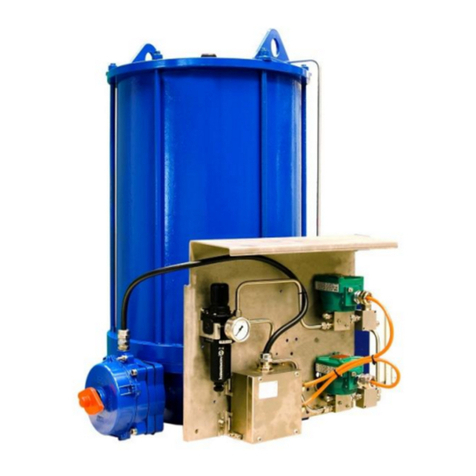
BIFFI
BIFFI TPS Series User manual

BIFFI
BIFFI GPO-EAC User manual

BIFFI
BIFFI ECU 1000 Manual
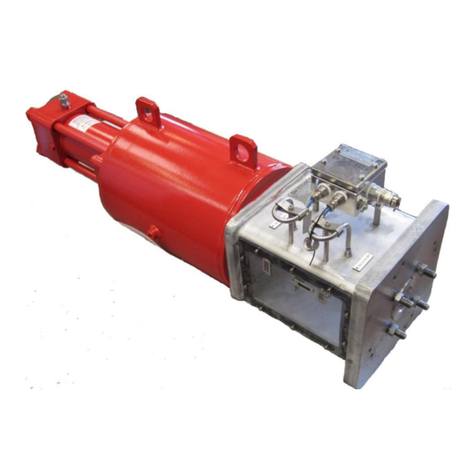
BIFFI
BIFFI HLAS User manual
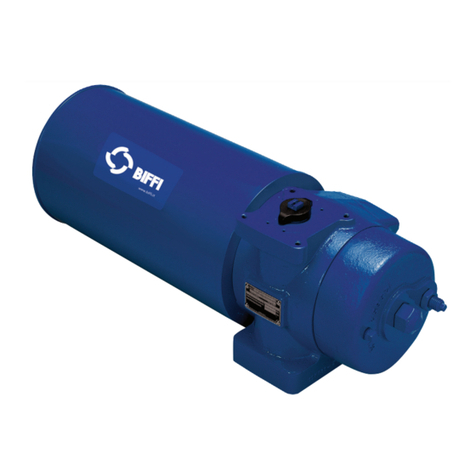
BIFFI
BIFFI FCB Series User manual

BIFFI
BIFFI FCB Series Operating instructions

BIFFI
BIFFI OLGA-H User manual
BIFFI
BIFFI ICON3000 Series Setup guide

BIFFI
BIFFI HLAS User manual

BIFFI
BIFFI OLGA Series User manual

